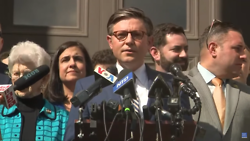The vast and impenetrable Amazon rainforest is the stuff of legend. It is among the world's most biodiverse places, hosting tens of thousands of plant and animal species in its 3.14 million-square-kilometer (1.21 million-square-mile) expanse. And for Brazil's government, it is a perennial challenge. Protecting the densely forested and sparsely populated area is as difficult as it is important for the country's leaders in Brasilia. The rainforest covers more than half of Brazil's territory, including its borders with seven other countries. Yet it is home to only about 12 percent of Brazil's population. Moreover, between its prohibitive landscape and the environmental protections in place there, the Amazon contributes little to the country's economic output.
Now, however, President Michel Temer's administration may be reassessing the rainforest's value. Temer issued a decree in August to allow mining in a 47,000-square-kilometer area of the Amazon formerly known as the National Reserve of Copper and Associated Minerals, or Renca. Environmentalists quickly condemned the measure, which they argued would pave the way for increased mining in the region and jeopardize Brazil's commitment to the Paris Agreement on climate change. (The accord itself largely lacks enforcement mechanisms to keep Brazil on target, but countries such as Norway have threatened to withdraw their financial support for the so-called Amazon fund should Brasilia fall short of its goals.) A judge subsequently suspended the decree's implementation, prompting the president to revise it to stipulate that mining in Renca may be conducted only if the activity protects natural resources and minimizes environmental damage. The regulatory dispute highlights the Brazilian government's perpetual struggle to assert its authority over the Amazon and tap into its abundant resources while still preserving its environmental integrity.
What's Mined Is Mined
Renca is a mineral reserve supposedly rich in gold, titanium and rare earth elements; Brazil's military dictatorship created it in 1984. To keep multinational companies from exploiting the area's mineral wealth, the government also established a state-owned company, the Geological Survey of Brazil (CPRM), and gave it the exclusive rights to conduct studies and coordinate mining activity in Renca. The CPRM never took advantage of its access to Renca, but its monopoly over the reserve nonetheless deterred foreign mining companies, as well as domestic firms, from undertaking projects there. Even after the military dictatorship collapsed in 1985, it was unclear whether companies could legally mine in the reserve.
Illegal mining, on the other hand, is a common practice in Renca. Though the exact number of illegal miners active in the area is unknown, some estimates put it at over 1,000. The rise of illicit mining in Renca was part of the reason Temer decided to do away with the area's protected status. By opening the land up to legal mining operations, the government hopes that it will displace the illegal ones. In addition, admitting companies to conduct geological surveys will give Brasilia a better idea of the untapped reserves still in the area.
Despite the controversy, Temer's decree would not give companies unrestricted access to Renca, portions of which would still be off limits to mining. Nor would the measure be without precedent; mining is nothing new for the Amazon. The rainforest, in fact, has been home to the Carajas Mine, one of the world's largest iron ore extraction facilities, since the 1970s, and Brazil exports over 140 million metric tons of iron ore from the mine each year. Brasilia's decision to expand mining in the Amazon is just the latest development in an effort to boost economic activity in the region that dates back to the 19th century.

An Economic Powerhouse
And mining isn't the only industry the Brazilian government has promoted in the Amazon. Former Presidents Luiz Inacio Lula da Silva and Dilma Rousseff both pushed to construct hydroelectric dams in the region, inviting their share of backlash in the process. During his tenure between 2003 and 2010, da Silva approved plans for the Belo Monte dam, which began operations in 2016 and is expected to become the world's third-largest hydroelectric dam when it comes fully online in 2019. (At the same time, his government managed to reduce the rate of deforestation in the Amazon by nearly 80 percent.) The project is one of about 30 dams that the government has built or started building over the past decade. Combined, the new infrastructure will add more than 38,000 megawatts of capacity to Brazil's electric grid.
Agribusiness is another burgeoning sector in the region. Though the government banned soybean production in the Amazon to curb deforestation, grain production is thriving. The region of Cerrado, on the Amazon's border, now accounts for more than half of the country's total grain production and is on track to harvest over 112 million metric tons this year. But the rapid growth of Cerrado's grain industry has outpaced the development of transport infrastructure in the region; most of the grain produced in Cerrado has to travel to ports in Southern Brazil for export. To streamline the shipping process, Brasilia is partnering with private companies to build a port complex in the Amazon, along with roadways leading to the facility. The venture, however beneficial for trade, likely will impinge on the rainforest and could reverse the gains da Silva made in halting deforestation. Between 2015 and 2016, the rate of deforestation increased by 29 percent, according to Brazil's National Institute for Space Research, thanks in large part to activities such as cattle farming, as well as illegal mining and lodging operations.
Along with these booming industries, the Amazon also boasts an industrial free-trade zone in the city of Manaus. The project, launched in 1967, began as a government initiative to develop and populate the area by promoting different industries there. Today, about 700 companies operate in the zone and benefit from the tax exemptions Brasilia offers them to produce a variety of goods, including motorcycles and electronics, for domestic consumption. The Manaus Free Trade Zone employed more than 85,000 workers and generated about $24 billion in revenue last year, an impressive figure considering its total output fell 6 percent from 2015.
Throughout Brazil's history, every administration has grappled with the challenge of governing the Amazon in one way or another, and every administration has tried to exploit the region's resources. Capitalizing on the Amazon's natural wealth, in turn, inevitably means degrading its environmental integrity — though some leaders, such as da Silva, manage to do so more slowly than others. Even Marina Silva, who will likely represent the environmentally conscious Sustainability Network in next year's presidential race, has plans for the Amazon's development on her agenda. The quest to project authority in the Amazon, coupled with the region's economic potential, will keep driving the Brazilian government's efforts to expand its economic activities there, creating new environmental challenges at every turn.






